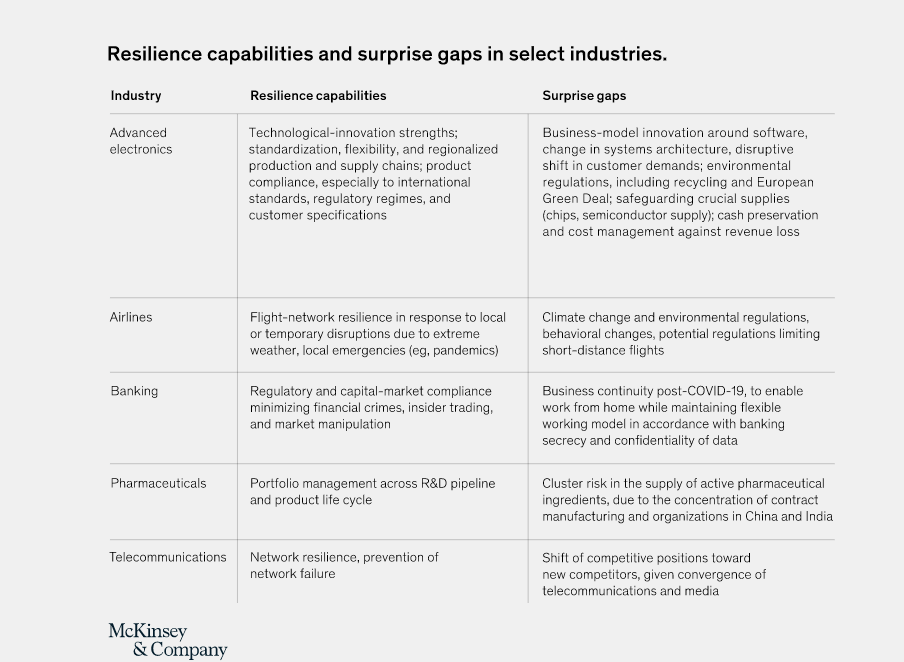The number of companies still struggling with technological miscommunications and disjointed technologies is too many.
So, what does this mean? It means one solution does not fit all and investing in technology without knowing its capabilities and understanding your business’s real pain points is a huge waste of resources. It’s like buying a brand new, fully-loaded racecar and only using it to run basic errands.
After reflecting on the ways in which people and technology are so closely intertwined in today’s business world, we were left thinking about the ways they depend on each other.
It comes down to three C’s – connection, communication, and cooperation.
There’s a reason the term “pillar” seems to apply so easily to business. Pillars are supportive and signify stability and security; something every business strives for. However, we know that company growth can’t be supported without the right digital infrastructure and maintenance in place. Besides all that, “prop”, “post”, and “column” just don’t have the same oomph.
The three C’s require a balance that allows business pressure to be distributed evenly and equally throughout your company structure. The purpose? To mitigate potential risks.
A weakness in one of the pillars, like a poor communication strategy or outdated web systems, can cause a backlog of blockers and an eventual bottleneck effect. This can happen if business silos are not properly aligned with each other, so let’s talk about the importance of not just making those connections, but preserving them.
Solving Common Business Communication Challenges
The fact is a lot of internal business obstacles stem from a simple but pesky issue. Miscommunication. Whether lines are crossed in person, remotely, or technically, a lack of comprehension always leads to confusion, which fragments directives and ultimately leaves even the best of us lost in translation. The pillars are there to keep us aware and help us navigate strengths, weaknesses, obstacles, and threats.
We believe proper communication is crucial. In today’s digital age, you could argue it’s especially important because it relates to three different segments – people, technology, and business growth. Together, these can create a solid foundation and hold everything in place.
So, how does connection work to combine teams, tech, and growth? The first step is to align your internal communications to your digital connections.
Most of us recognize that working within a communicative environment is imperative to managing a successful business. But in today’s day and age, communication expands way beyond teambuilding exercises, Slack channels, and meetings. When you throw digital requirements and implementations into the mix, companies are struggling with connecting their people to these technologies. Why? We believe this is due in part to systems being mismanaged or improperly integrated, leading to a lack of cooperation within those settings.
Without the proper connection, communication, and cooperation, how in the world would new processes and technologies effectively move forward? In order to get the most out of your tech investment, not only are easy-to-navigate systems required, you need the right people working with you and the best possible platform to work on. Integration is key here and RWS’s Content Management System allows for seamless integrations among diverse technologies so you have the freedom to build and create custom applications that address your specific business needs. It allows you to connect your people, technologies, and business and become a transformative organization.
The Three Key Elements to Align Your Business Strategy
1. People
More and more often we see teams take on new, hybrid roles; roles that have them performing full-time regular tasks along with extra, digitalized ones.
2. Process
We’ve seen companies crumble under the pressure of technological evolution, not because of poor industry practices or insufficient digital upkeep, but the struggle to combine the two with internal processes.
3. Technology
There’s a reason why successful organizations make the effort to ensure their people, processes, and technologies are properly aligned with one another. In short, technology is meant to make your life easier, not harder.
Solving Digital Discrepancies
A recent McKinsey report says it best.
In a world where the future is uncertain and change comes fast, companies need to look beyond short-term performance and basic organizational health. They must be able not only to withstand unpredictable threats or change but to emerge stronger. In short, they need to be resilient.
MCKINSEY & COMPANY
- The issue: As we mentioned earlier, in order to keep up with industry standards, we must create a connection between our people and technologies. However, this is where the distribution of weight amongst the three pillars comes in. Teams working under constant, unresolved pressure can lead to disaster.
- The solution: Hire a third party to implement or build applications that would lessen the workload, streamline operations, and increase productivity levels. Best practices mean equilibrium, not more pressure, and long-term solutions will mitigate current or potential risks.

To paraphrase our digital partner RWS, “Who would want to hire someone who wasn’t willing to immerse themselves within a company’s practices or integrate into the team?”
We feel the same way about CMS systems. Why invest in a product that makes your life harder rather than easier?
There’s a reason we’ve been long-time partners with RWS and why RWS Tridion Sites was acknowledged as the best-in-class pick for most scalable enterprise web content management platform.





